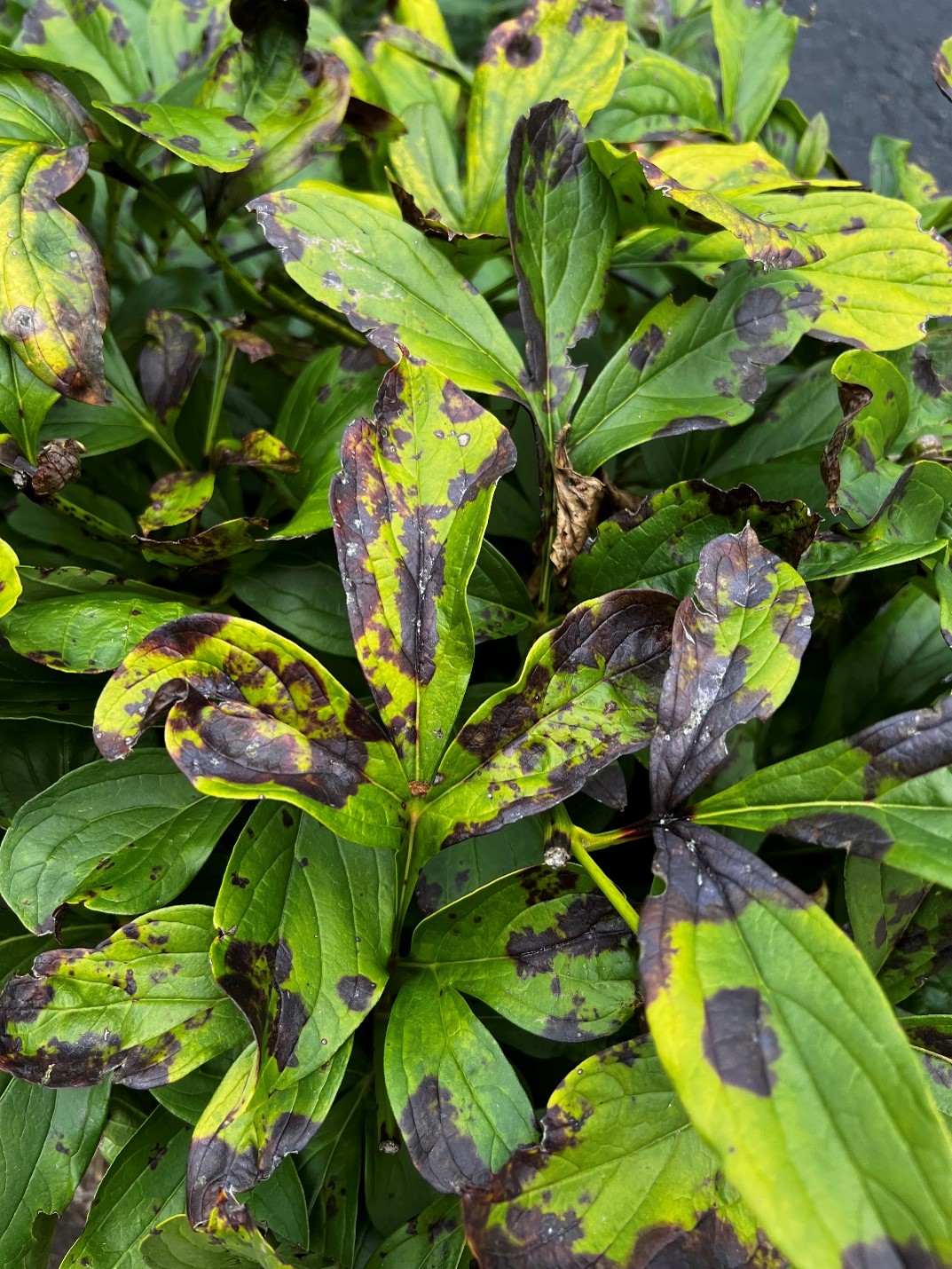Issue 9, August 18, 2022
Peony Leaf Blotch
Peony leaf blotch disease is caused by the fungus Graphiopsis chlorocephala (formerly Cladosporium paeoniae). If you have seen peonies, you have most likely seen this disease. It goes by many other names, including Cladosporium leaf blotch, red spot, and measles.

Peony leaf blotch (Graphiopsis chlorocephala), Travis Cleveland, University of Illinois
Symptoms
The disease is caused by a fungus that grows superficially on leaves, stems, and petioles, causing unsightly spotting. The spots are initially small, circular, red, or purplish and appear on the upper surface of young peony leaves. Later in the season, they merge into large, glossy, irregular, dark purple blotches. As you flip the leaves over, the corresponding blotches are a tan-brown to chestnut brown. The fungus also attacks stem tissues, causing symptoms that range from purple-red, irregularly shaped flecks or streaks with diffuse margins. The mature symptoms of this disease are quite unsightly. Despite the appearance, peony leaf blotch does not significantly affect plant vitality.
Disease Management
Peony leaf blotch cannot be controlled this late in the season. If you are seeing this disease now, take note, and prepare to manage it for next year. Plant debris harbors the fungal pathogen and is an important source of inoculum for next spring’s infections. This fall or early next spring, remove all old top growth to ground level and destroy, bury, or remove it from the garden.
Use fungicides to protect new foliage as it emerges next spring. Initiate sprays when new growth is 2 to 4 inches tall and reapply as directed by the label until the flowers begin to open. Unfortunately, no products specifically list peony leaf blotch on their label. However, research from the IR-4 Ornamental Horticulture Program found that Tebuconazole (Torque), boscalid + pyraclostrobin (Pageant Intrinsic), fluoxastrobin (Disarm), chlorothalonil (Daconil WeatherStik), copper hydroxide (Kocide), and triticonazole (Trinity), and all reduced the severity of red spots compared to the non-treated check plants. These products also had no observable effect on the overall vigor of the plants in their trial. Before using any of these products, check to see if the product label includes your application site (e.g. landscape, nursery, etc.). Also, check to be sure peonies are not listed as sensitive to the product. You may want to test the product on a small-scale basis first. Many people choose to tolerate the disease rather than apply fungicides. Replacing the problematic peonies with newer resistant varieties may also be an option.
References:
R.J. McGovern, W.H. Elmer (eds.), Handbook of Florists’ Crops Diseases, Handbook of Plant Disease Management, https://doi.org/10.1007/978-3-319-39670-5_46
Palmer C, Vea E (2014) IR-4 ornamental horticulture program Botrytis efficacy: a literature review. The IR-4 Project, Rutgers University. http://ir4.rutgers.edu/Ornamental/SummaryReports/BotrytisEfficacySummary_2014.pdf Accessed 15 August 2022
Author:
Travis Cleveland